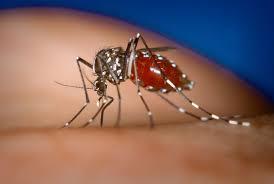Fri 22 Aug 2014
The New Mosquito Borne Virus, Chikungunya
Posted by sugarland
Mosquitoes are a constant pest that everyone agrees we’d be better off without. Aside from being a nuisance when we want to enjoy nice weather, mosquitoes are also well known for giving us red bumps and itchy skin for days after they bite. However, these insects can do a lot worse than just give you a spot to scratch. Like West Nile virus before it, Chikungunya virus has been making headlines this past year and we largely have mosquitoes to thank for it.
What Does This Virus Do?
The most common symptoms that accompany infection include joint pain and severe fever. Other symptoms people have reported are muscle pain, headache, rash and joint swelling. While some people may not show any symptoms, the majority of those who have been infected by Chikungunya virus display some combination of the above. Generally, these symptoms will show themselves within three to seven days after infection takes place.
Fortunately, death by Chikungunya virus is still rare. However, the severity of the above symptoms cannot be exaggerated and are sometimes so bad, they become disabling. Most, though, improve within a week. Some unlucky people may experience their joint pain for months. Once recovered, an individual is most likely immune from further infections.
Some people are at risk for a more severe version of Chikungunya virus. The elderly (those over 65) and people with heart disease, diabetes or high blood pressure are candidates. Newborns who get infected shortly after birth are also prone to worse bouts of the disease.

Treatment
At the moment, there is no real treatment for Chikungunya virus. Obviously, if you’re experiencing any of the above symptoms, you should go see a doctor immediately. This is especially true if you’ve been traveling out of the country recently.
The closest thing to a treatment involves getting plenty of rest so your body is able to fight the virus as best it can. Drink fluids constantly so you don’t succumb to dehydration. For the pain and fever, take naproxen, paracetamol, acetaminophen and ibuprofen. Your doctor will probably have some suggestions as well.
How Does the Disease Spread?
Like West Nile virus, Chikungunya virus is carried by mosquitoes. The best carrier of this terrifying disease is known as the tiger mosquito. This native species is active during the day, travels in huge numbers and is extremely aggressive. While it is particularly common in the southeast of the country, the tiger mosquito has shown up as far north as New York and Connecticut. As their name suggests, they are recognizable because of their black and white stripes.
Keep in mind, though, that other mosquitoes can carry the virus too. All it takes is one person who is infected to get bitten by one. The next time that carrier mosquito bites someone, they’ll essentially be pollinating them with this awful disease.
Current Cases
Although they just showed up in the US this fall, Chikungunya-carrying mosquitoes have been busy. Recently, six people in southern Louisiana alone were diagnosed with the virus. Most of these individuals were from the Greater New Orleans area, which sadly means they have been around plenty of other people who could have been infected as well.
Scarier still is that Texas has confirmed they’ve tested a native mosquito with the disease. Up until now, speculation had been that recent travelers were bringing the disease back with them. However, now it would seem Chikungunya virus no longer needs their help. With 484 confirmed cases throughout the country, Texas is home to 10 of them.
So although you probably never made an effort to be nice to mosquitoes, it’s now especially important to avoid them. This also means dumping out standing water, which is a choice home for these pests. To learn more about Sugarland Exterminating’s effective mosquito control options, call today, (337) 233-3800.
Sources:
http://www.nola.com/health/index.ssf/2014/08/six_people_in_south_louisiana.html
http://www.cdc.gov/chikungunya/
